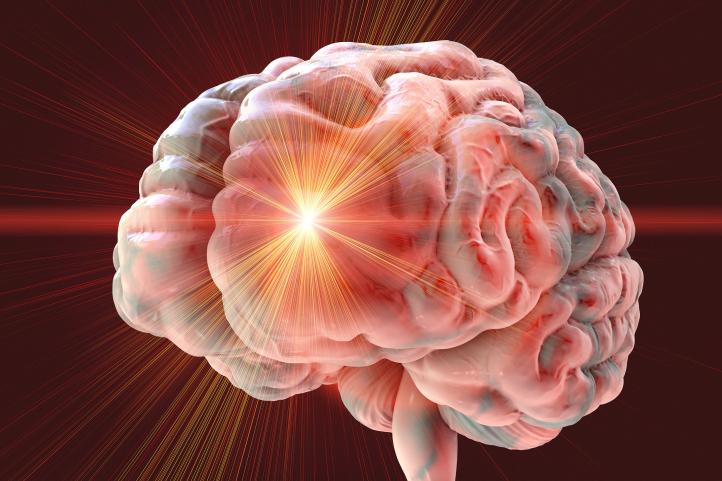Aphasia, a consequence of brain damage
Aphasia is defined as a language disorder caused by acquired brain damage. It is caused by an alteration of the language-dominant cerebral hemisphere (the left cerebral hemisphere in most cases) whether it is caused by a stroke, a traumatic brain injury, a tumor or a infection. People with aphasia may have problems with expression, comprehension, reading, and / or writing, and there are severity varies, ranging from total inability to communicate to mild impairment. This is related to the various types of aphasia.

Types of aphasia and evolution
People with non-fluent aphasia show reduced expression, often with difficulty articulating words. Their comprehension difficulties are variable. On the other hand, people with fluent aphasia speak fluently using erroneous or distorted words. They also have serious comprehension problems. In all aphasias, there is a limitation in the ability to communicate, and the life of the person and their family is seriously affected. The evolution of language is related to several factors. On the one hand, it influences the extent of the injury, the initial severity of the aphasia, the age of the person, the state of the other cognitive abilities, the state of general health, the collaboration of the patient, family support and speech therapy rehabilitation. It has also been shown that early rehabilitation can provide better results. We need to keep in mind that people with more severe aphasia may need alternative communication systems, especially in the early stages. Family support will be very important in making use of these systems.
Aphasia rehabilitation
The speech therapist will establish a treatment plan based on a formal language assessment. In general, the goals of the treatment are to improve language and communication skills, hel the patient to adapt to the new situation, and educate the family. In connection with this last point, the speech therapist will provide information about aphasia and guidelines for the family to optimize communication. Language rehabilitation is a long process and may not only be necessary just after the brain injury. There are several ways to rehabilitate aphasia:
- Individual treatment of aphasia focuses on language impairments detected in formal assessment as well as cognitive impairments necessary for communication.
- Computerized rehabilitation of aphasia can be a good complementary tool to in-person rehabilitation. as it allows to enhance the comprehension of words, denomination, reading and writing.
- It is also possible to realize group sessions. In these sessions it is advisable to bring together people with the same type of aphasia in order to work on common and relevant goals for all members of the group. It is common to find as a general goal the improvement of production at the lexical level as well as conversational skills. In addition, group sessions encourage a sense of belonging by being with other people with similar difficulties and encourage socialization through group work.
Apart from these conventional treatments, there is treatment with Transcranial Magnetic Stimulation (EMTr) for aphasia. The published scientific literature speaks of EMTr as a safe, non-invasive procedure that can be applied clinically to modulate cortical excitability during language recovery after stroke (Hamilton et al., 2011). With the application of this procedure, changes can be observed in perilesional areas of the left hemisphere and contralateral areas in the right hemisphere. This procedure is especially indicated in patients with Broca (motor) aphasia as it inhibits the activity of the right pars triangularis.

Bibliographic references
- Cuetos, F. (2012). Neurociencia del lenguaje: bases neurológicas e implicaciones clínicas. Madrid: Médica Panamericana.
- González, P., & González, B. (2016). Afasia: de la teoría a la práctica. México: Médica Panamericana.
- Hamilton, R., Chrysikou, E., & Coslett, B. (2011). Mechanisms of aphasia recovery after stroke and the role of noninvasive brain stimulation. Brain and Language, 118, 40-50